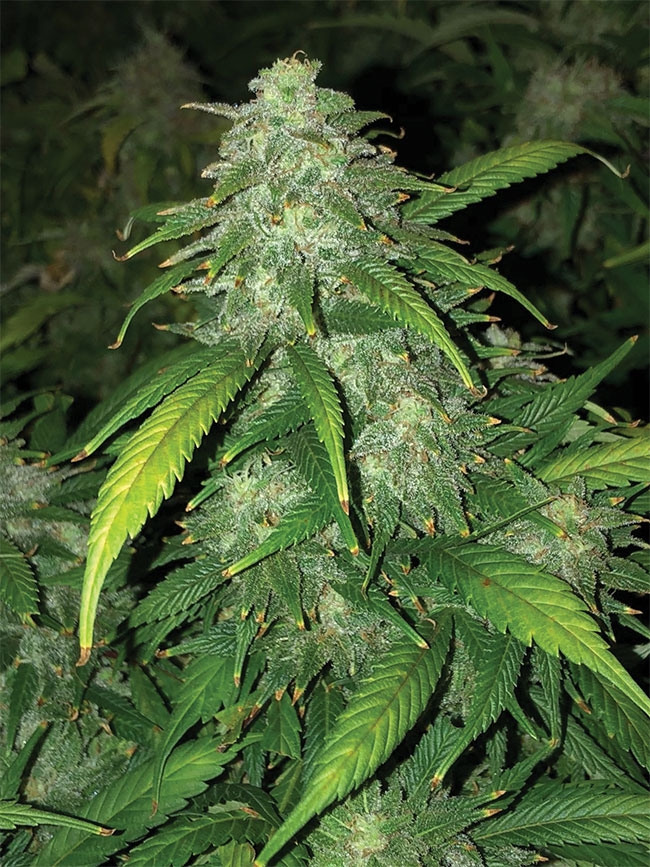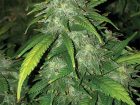
Features
Production
Nutrient needs of cannabis from rooting to harvest: Part two
In Part I of this series, information was provided on carbon dioxide and its use. Many companies have come up with new technologies to use dissolved carbon dioxide.
January 9, 2019 By Mohyuddin Mirza
 Damaged leaves cannot manufacture food properly and thus bud size and quality can be affected.
Damaged leaves cannot manufacture food properly and thus bud size and quality can be affected. More research is coming to find new ways of supplying CO2 to cannabis plants with additional yield and quality benefits.
Macro-elements for cannabis growth
Nitrogen, phosphorus, potassium, calcium, magnesium and sulfur are considered to be “macros,” because they are needed and required in relatively large amounts, compared to micro-elements like iron, manganese, copper, zinc, boron and molybdenum. For example, nitrogen is required anywhere from 125 to 200 mg/L (parts per million) while iron is required between 2 and 3 mg/L.
I am going to use the term “nutrients” because none of the elements is absorbed as an individual element by cannabis. They exist as “partners” with other elements. This is very important to understand when preparing nutrient or fertilizer programs. For example, nitrogen exists as potassium nitrate, calcium nitrate, sodium nitrate, ammonium nitrate and urea. Once dissolved in water, the salts ionize and stay suspended in solution until roots take them up. For example when potassium nitrate is dissolved in water it produces potassium ion ( K+) and NO3-.
Did you notice that K has a positive charge and NO3 has a negative charge? That is where we use the term cations and anions. Cannabis absorbs those cations and anions in the particular form nature has designed them.
Designing a good fertilizer program requires expertise and experience. I will focus on two important aspects where mistakes are made. One is the pH and the other is electrical conductivity (EC).
pH
An expert has designed a fertilizer program for veg and for buds but you still find lower leaves turning yellow or upper leaves turning chlorotic. Chlorosis is a term we use when the leaf veins are green and inter-veinal area is yellow. Blame the fertilizer, actually not. I will check the pH first.
These two pictures highlight the point I want to make. The cannabis plant on the left shows the start of iron deficiency in younger leaves. The grower wanted to spray the plants with iron chelate but was suggested not to do that at this stage. Buds are getting close to maturity. When I asked for a pH reading, it was done but there was no record of regular pH monitoring. The pH in the leach water was at 6.5, 6.6 and 6.7 in three samples in a coir growing medium. That pH will cause less uptake of iron and manganese and that is what is happening. Many growers start flushing the root zone in order to get rid of reserve nutrients in the growing medium and don’t adjust the pH of the leach water.
RELATED: Nutrient needs of cannabis from rooting to harvest: Part one
The picture on the right is of other plants in the same location. One can see the leaves are uniformly yellow. That is more likely deficiency of nitrogen due to flushing of nutrients from root zone. My recommendation is not to stop feeding completely so that deficiencies occurs, instead a low nitrogen and high potash formula will be useful. Buds need enough supply of key elements which are involved in carbohydrate synthesis and translocation like potassium.
Monitoring pH on a daily basis is very important for cannabis. By the time symptoms of deficiencies or toxicities occur, it is too late to correct them and the damage is done. Damaged leaves cannot manufacture food properly and thus bud size and quality can be affected. Read the trends in pH and take corrective measures before the symptoms appear. The range we want to maintain is between 5.8 and 6.2.
EC
EC is a simple and valuable tool to manage the growth of cannabis plants. It is measured as mmhos/cm or mS/cm and gives an idea how much osmotic pressure is created by the solutions in root zone. Cannabis prefers lower levels of EC, around 2.0 to 2.5 in the leach. Management of EC can help to control vegetative of generative growth of plants. Below 0.8 mS/cm is close to the starvation point. Measuring EC is not a substitute for an analysis of leach and fertilizer solution.
EC readings should also be taken on a daily basis. I have seen EC values of more than 3.0 mS/cm in mother plants resulting in water stress, woody branches and weak flowers, indicating a bud signal.
Dr. Mohyuddin Mirza (drmirzaconsultants@gmail.com) is an industry consultant with more than 37 years of experience in crop development, production and marketing. He specializes in the technical aspects of hydroponics and systems for plant production.
Print this page
